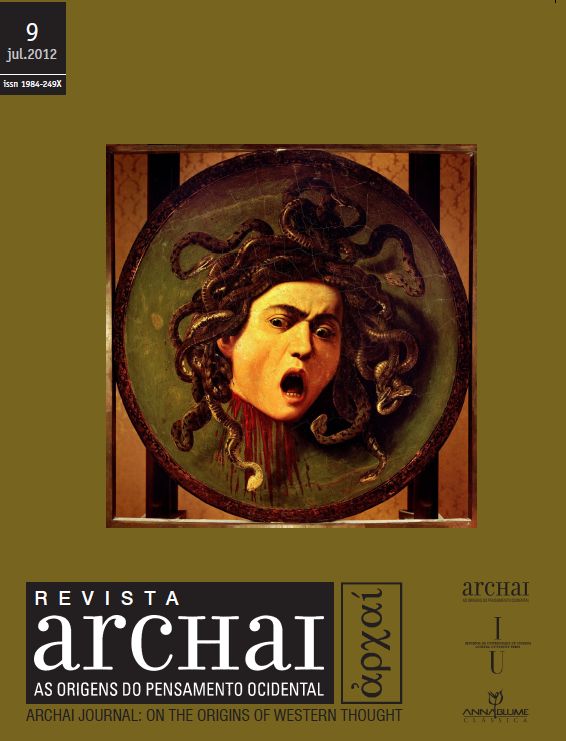Dramatic devices and philosophical content in Plato’s Symposium
Keywords:
Banquete, Sócrates, educação, BemAbstract
O Banquete de Platão serve-se de recursos dramáticos diversos, tais como a história-moldura, a organização dos discursos e o ensino de Diotima enquanto meios de orientação do leitor pela mensagem filosófica subjacente, a qual inclui um exame do sistema socrático de educação. Os discípulos de Sócrates demonstram notável entusiasmo pela filosofia, mas parecem incapazes de distinguir o amor por Sócrates do amor pela sabedoria. Agatão ocupa posição de destaque: devido a um trocadilho com o seu nome, a jornada do jantar em sua casa se tornará na ascensão em direção ao Bem. Além disso, ele representa a educação sofística e poética, assim como cada um dos oradores representa algum tipo particular de conhecimento, o que implica que não se deveria simplesmente impingir pedantismo a Eurixímaco, ou tomar o discurso de Aristófanes enquanto um interlúdio cômico. Eles formam, antes, uma complexa rede intertextual. Alcibíades exibe as fraquezas de um homem inábil ou relutante em seguir a totalidade do ensino socrático. Sua solicitação de ser conduzido por Agatão simboliza a incapacidade de encontrar o próprio caminho do Bem, ao passo que a interrupção da ordem bem organizada do banquete pelos boêmios lembra a atitude dos tiranos e de outros homens hostis à filosofia. Apesar dessa crítica aos estudantes de Sócrates, o Banquete finaliza com uma nota positiva. As ações finais de Sócrates ocupam-se das outras pessoas ”“ uma crítica implícita a quem sustenta que a filosofia subverte os laços sociais.
Downloads
Downloads
Published
How to Cite
Issue
Section
License
Given the public access policy of the journal, the use of the published texts is free, with the obligation of recognizing the original authorship and the first publication in this journal. The authors of the published contributions are entirely and exclusively responsible for their contents.
1. The authors authorize the publication of the article in this journal.
2. The authors guarantee that the contribution is original, and take full responsibility for its content in case of impugnation by third parties.
3. The authors guarantee that the contribution is not under evaluation in another journal.
4. The authors keep the copyright and convey to the journal the right of first publication, the work being licensed under a Creative Commons Attribution License-BY.
5. The authors are allowed and stimulated to publicize and distribute their work on-line after the publication in the journal.
6. The authors of the approved works authorize the journal to distribute their content, after publication, for reproduction in content indexes, virtual libraries and similars.
7. The editors reserve the right to make adjustments to the text and to adequate the article to the editorial rules of the journal.



